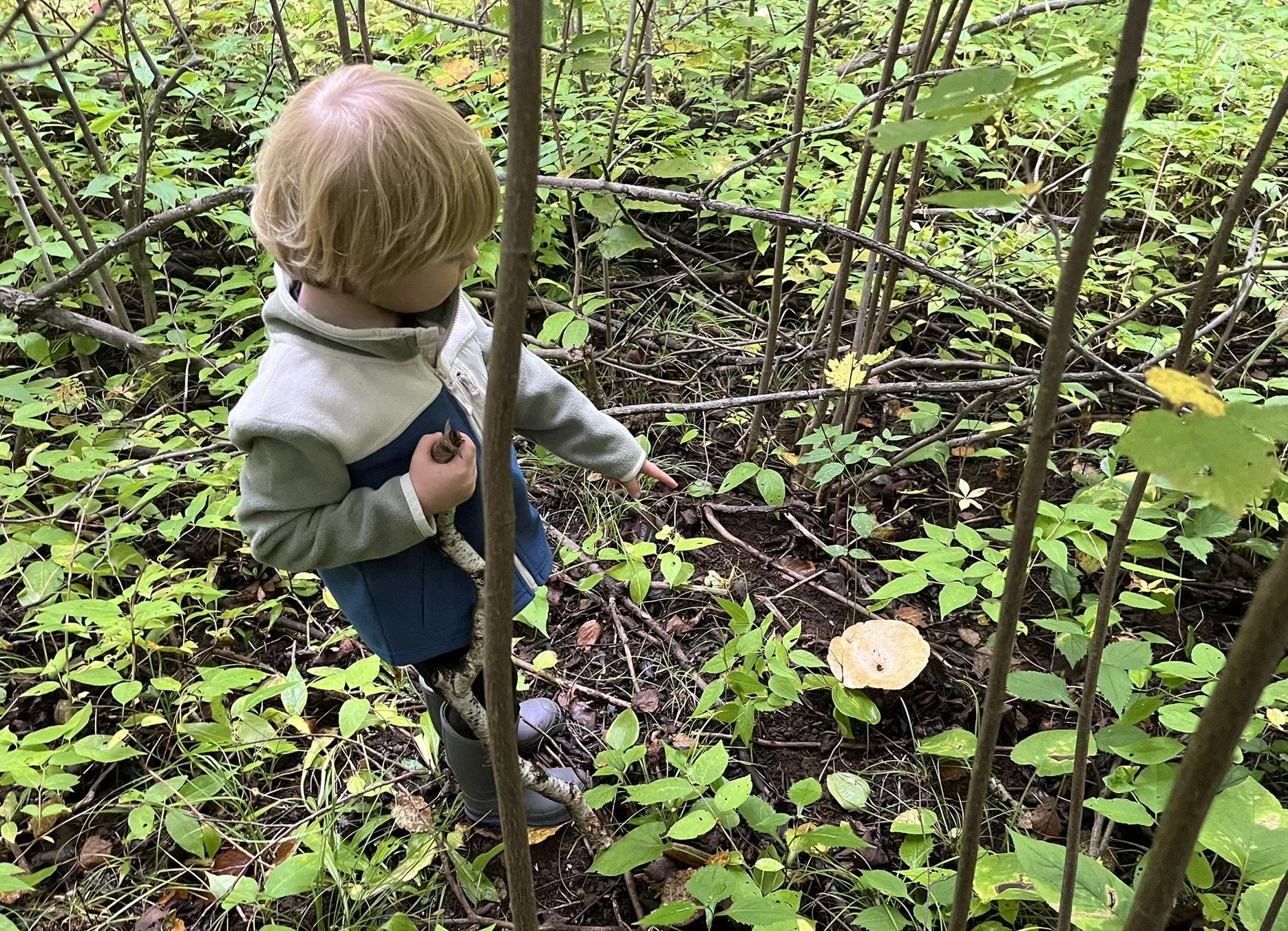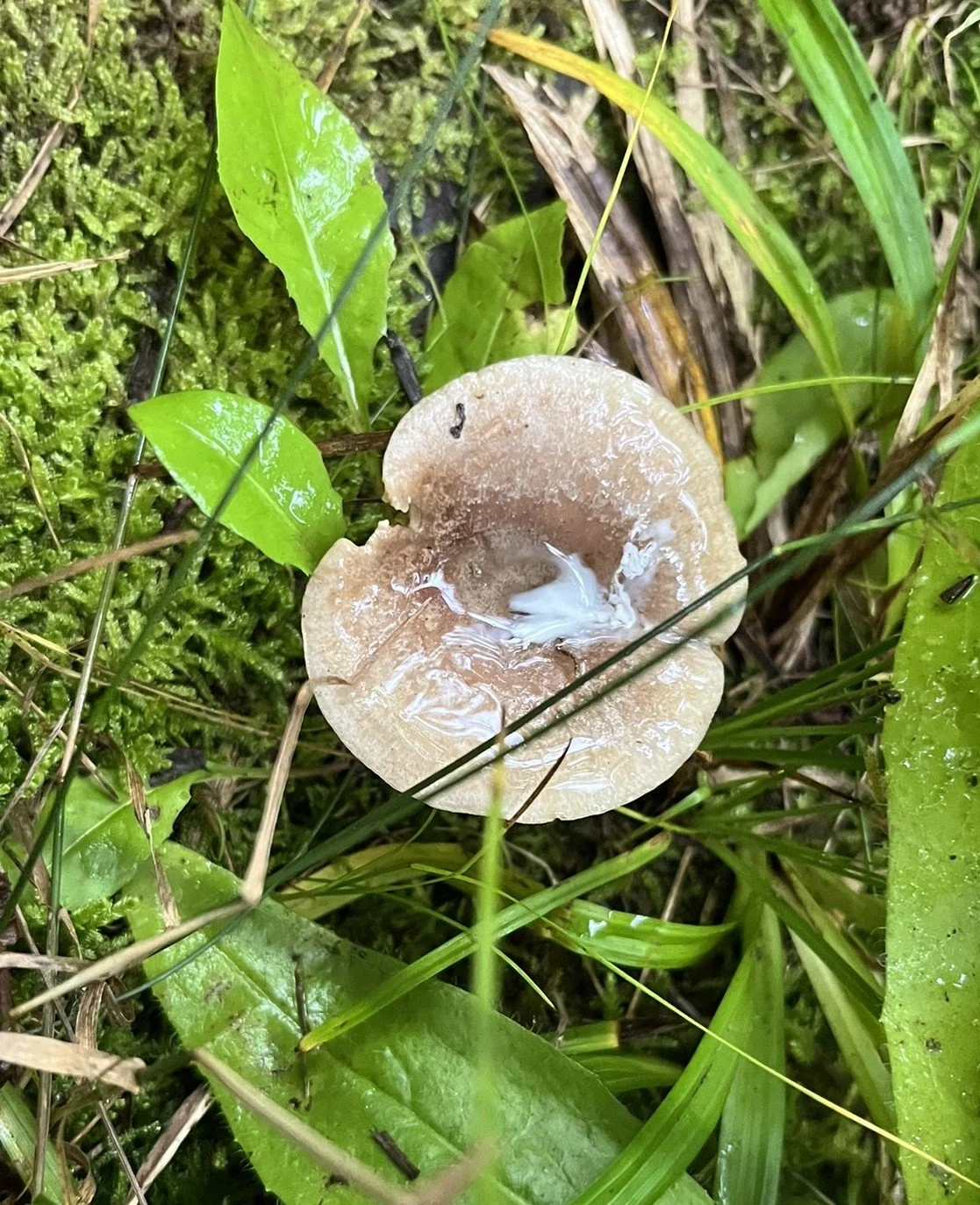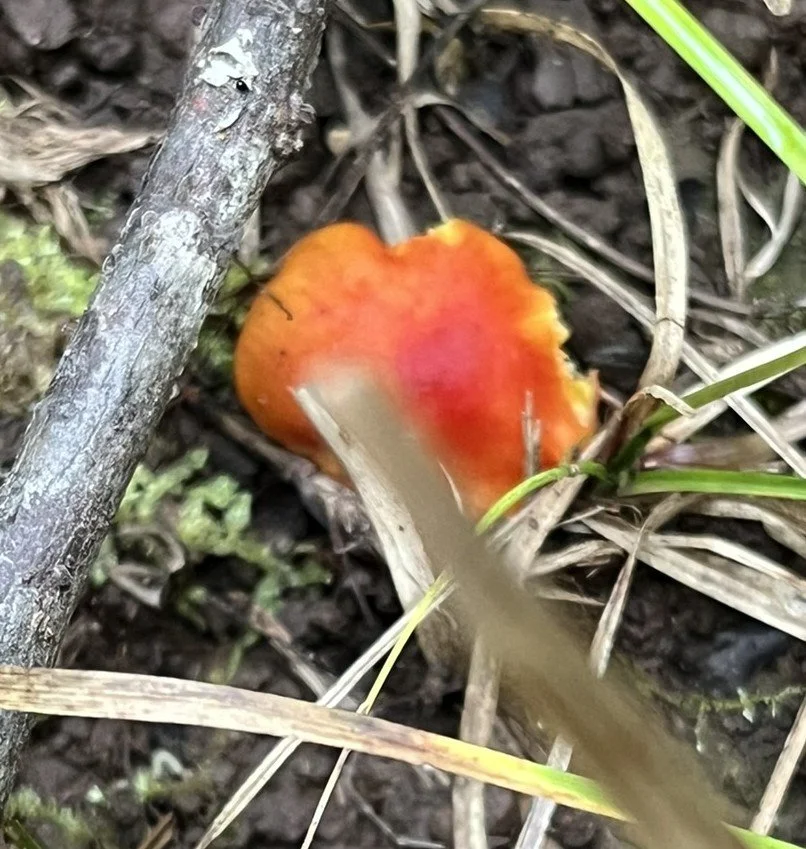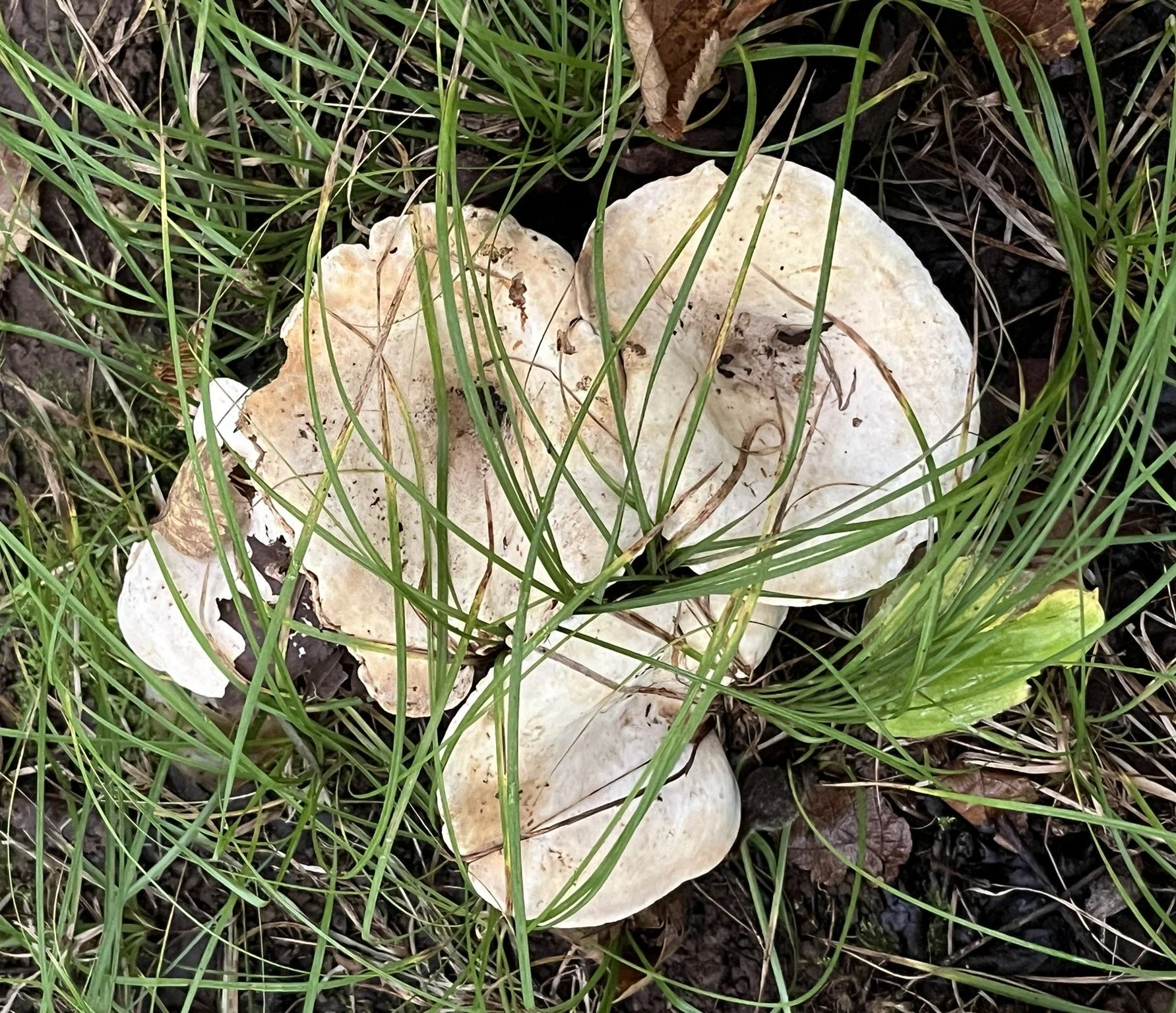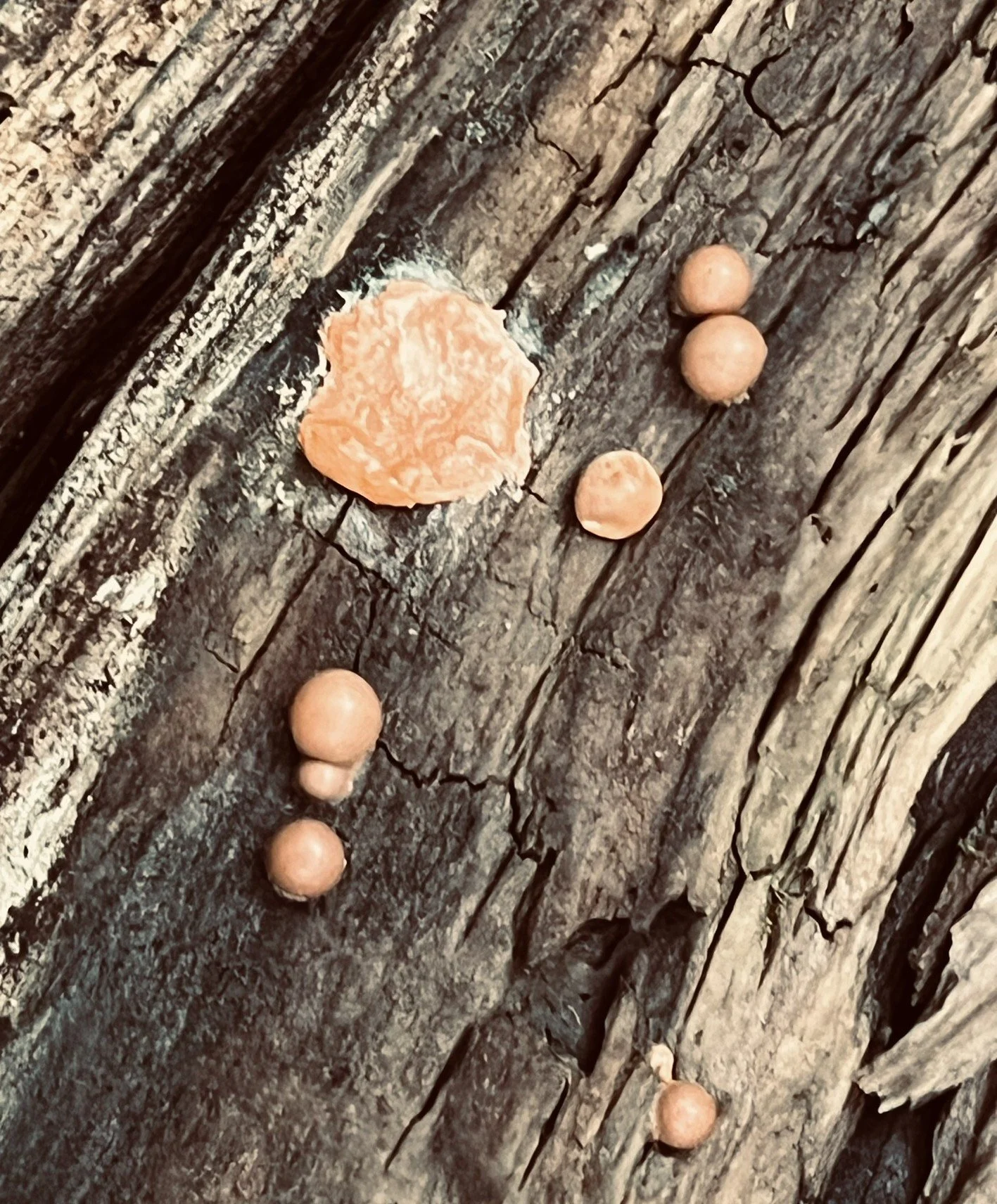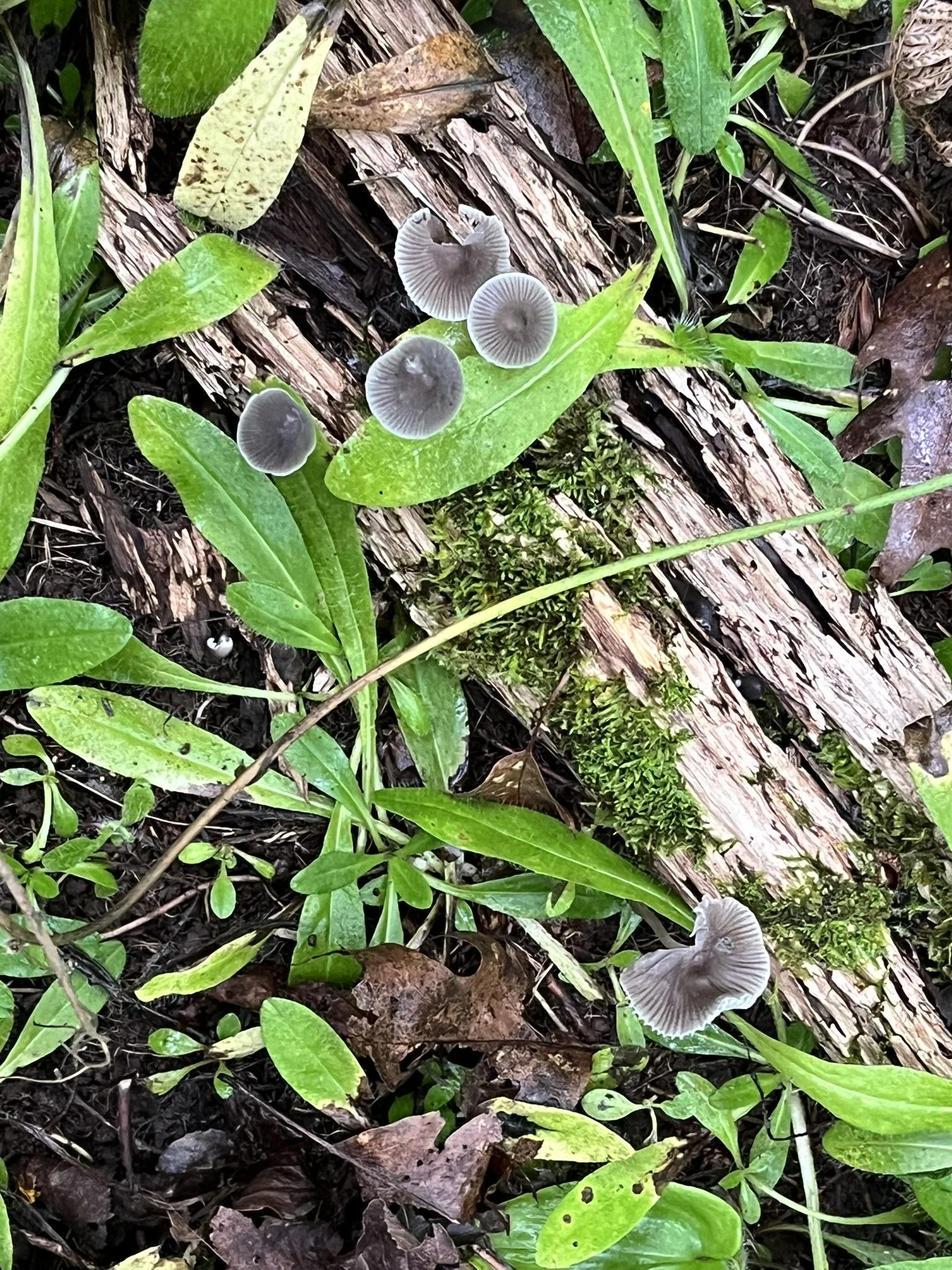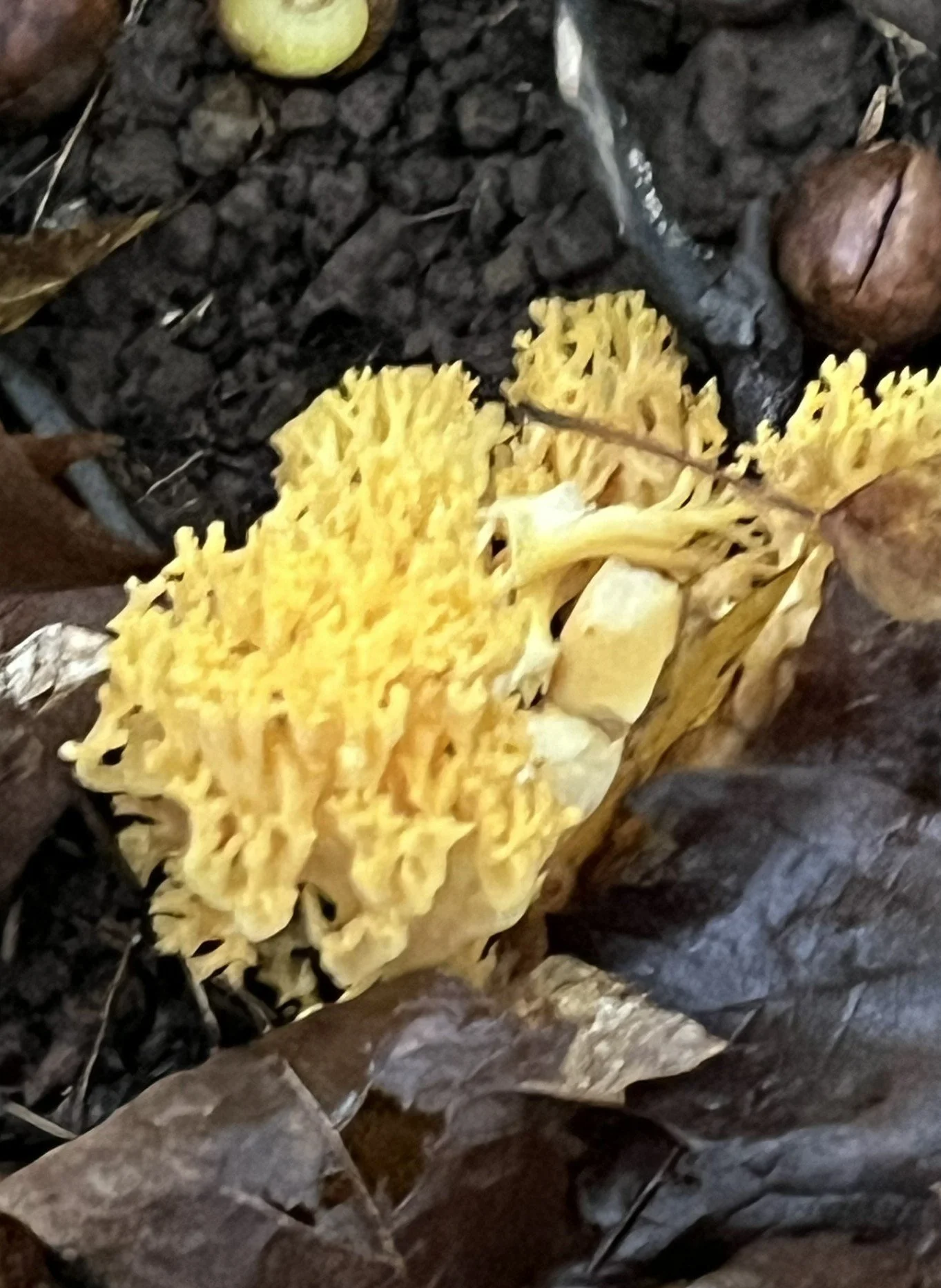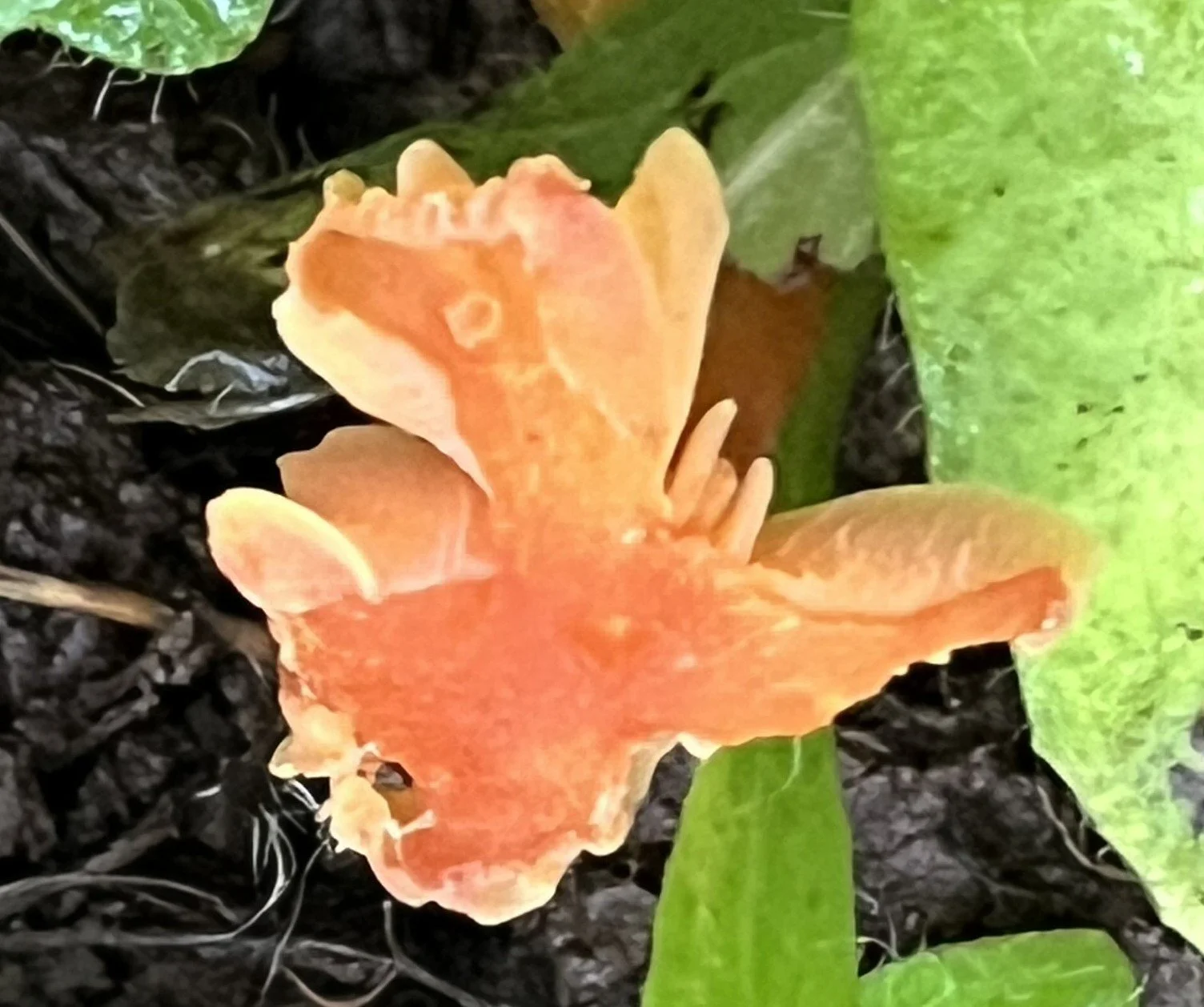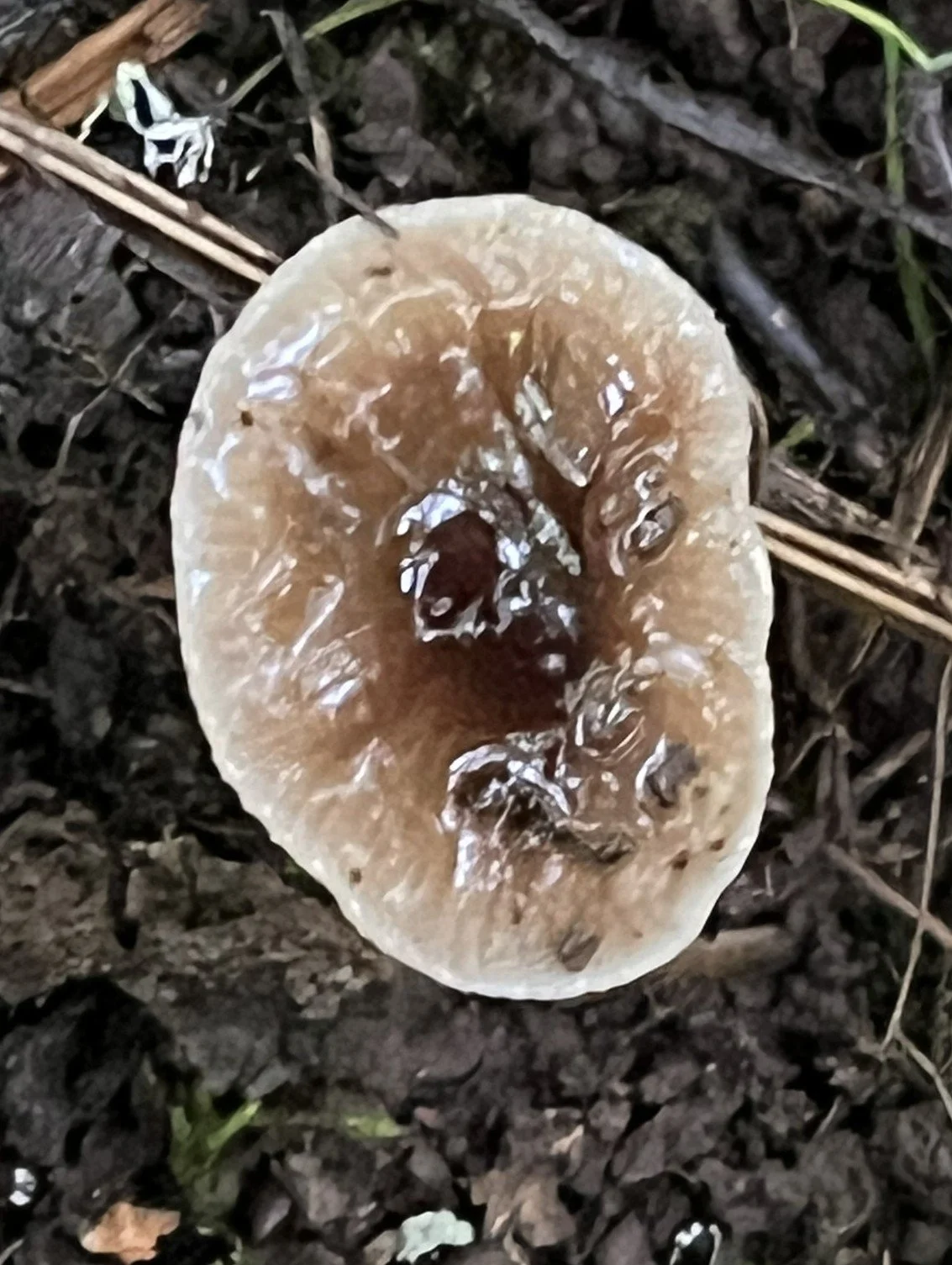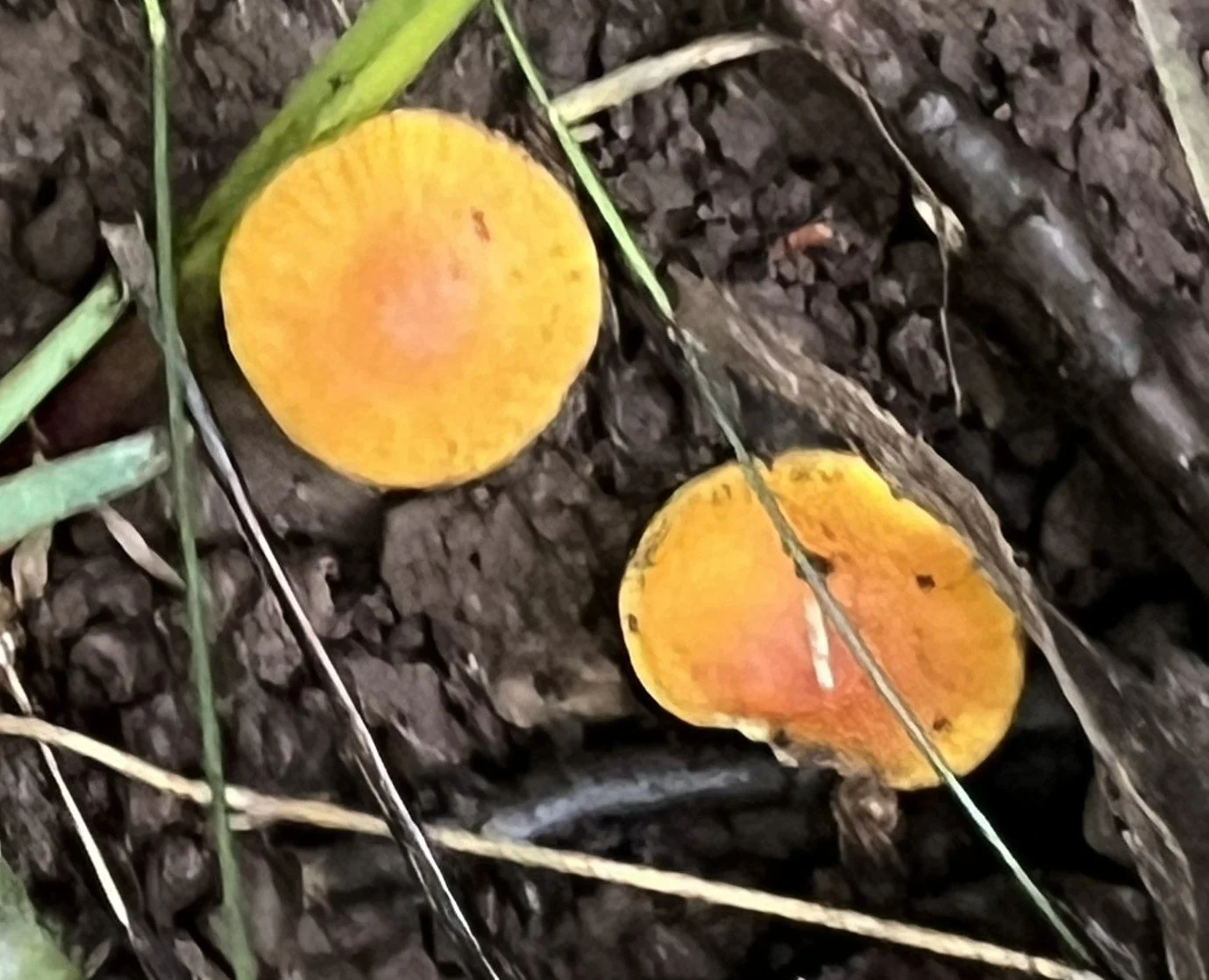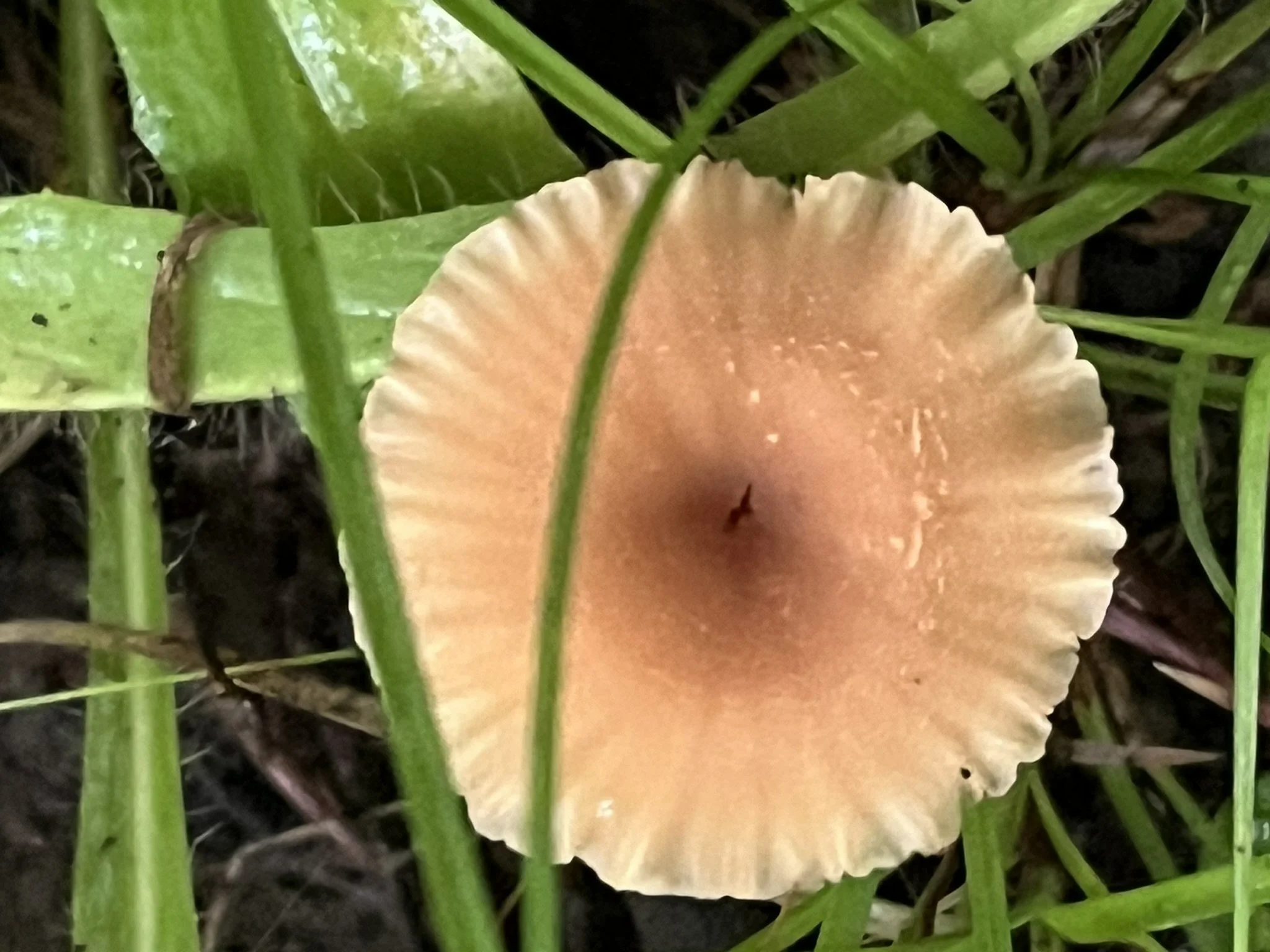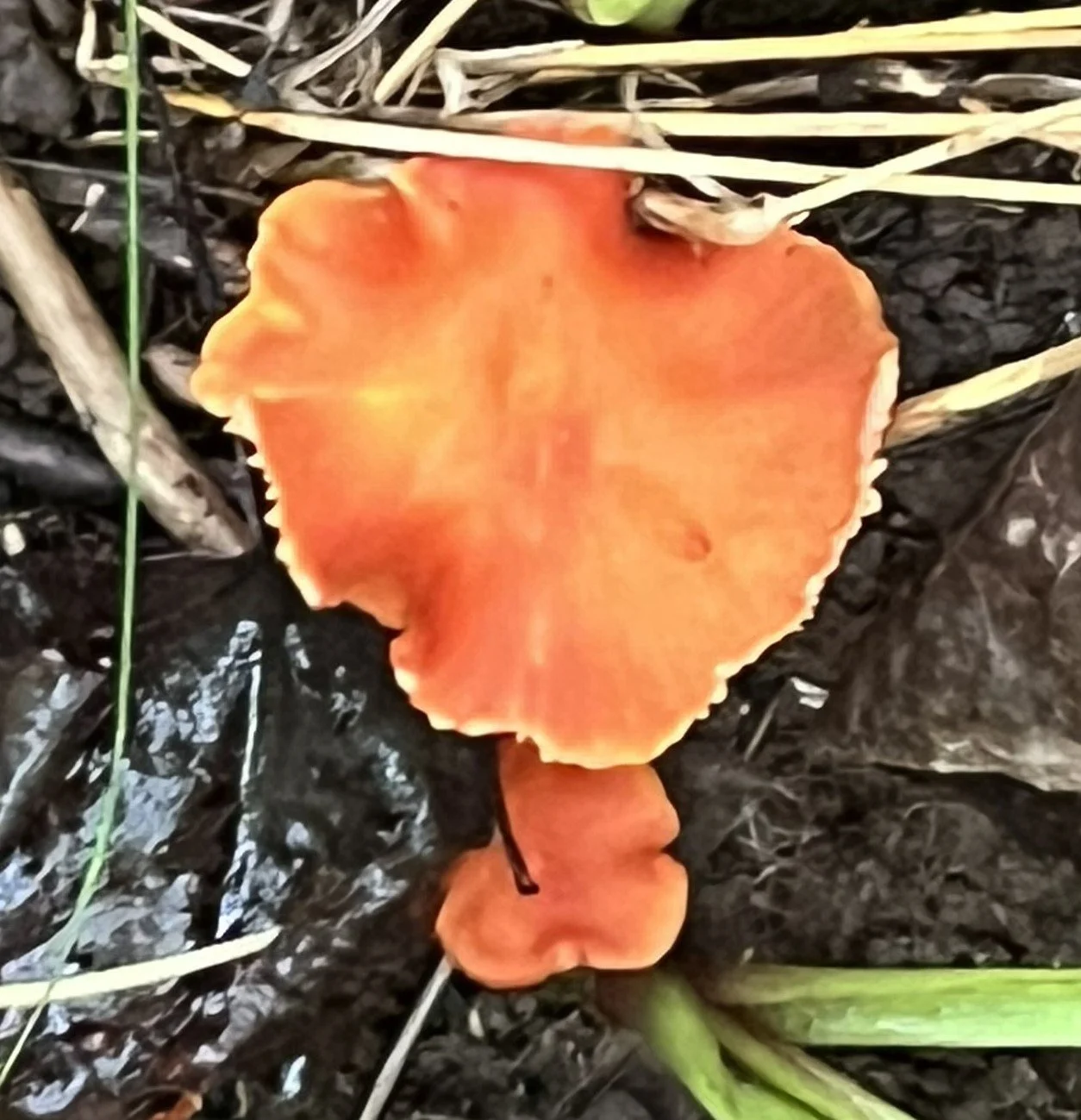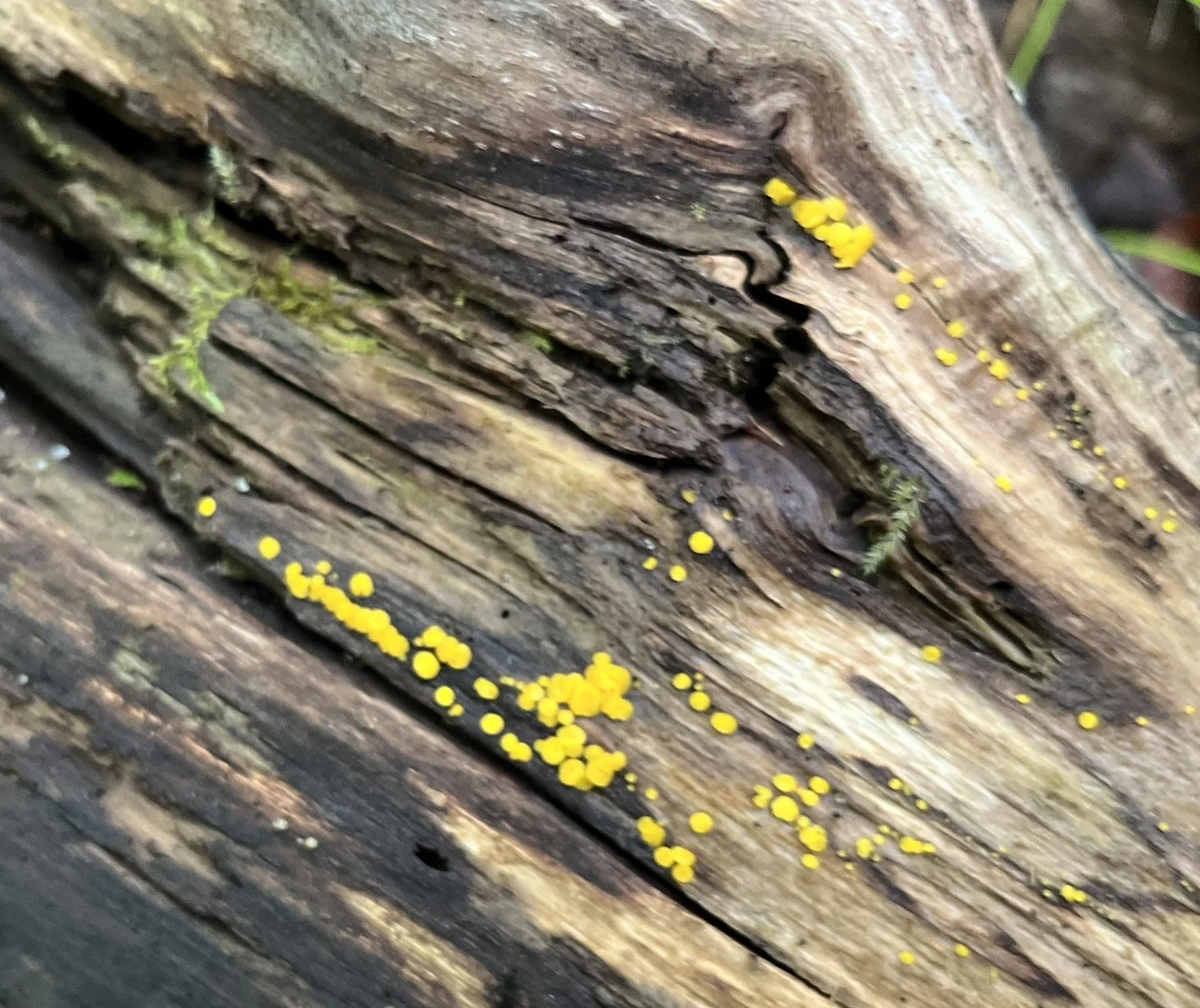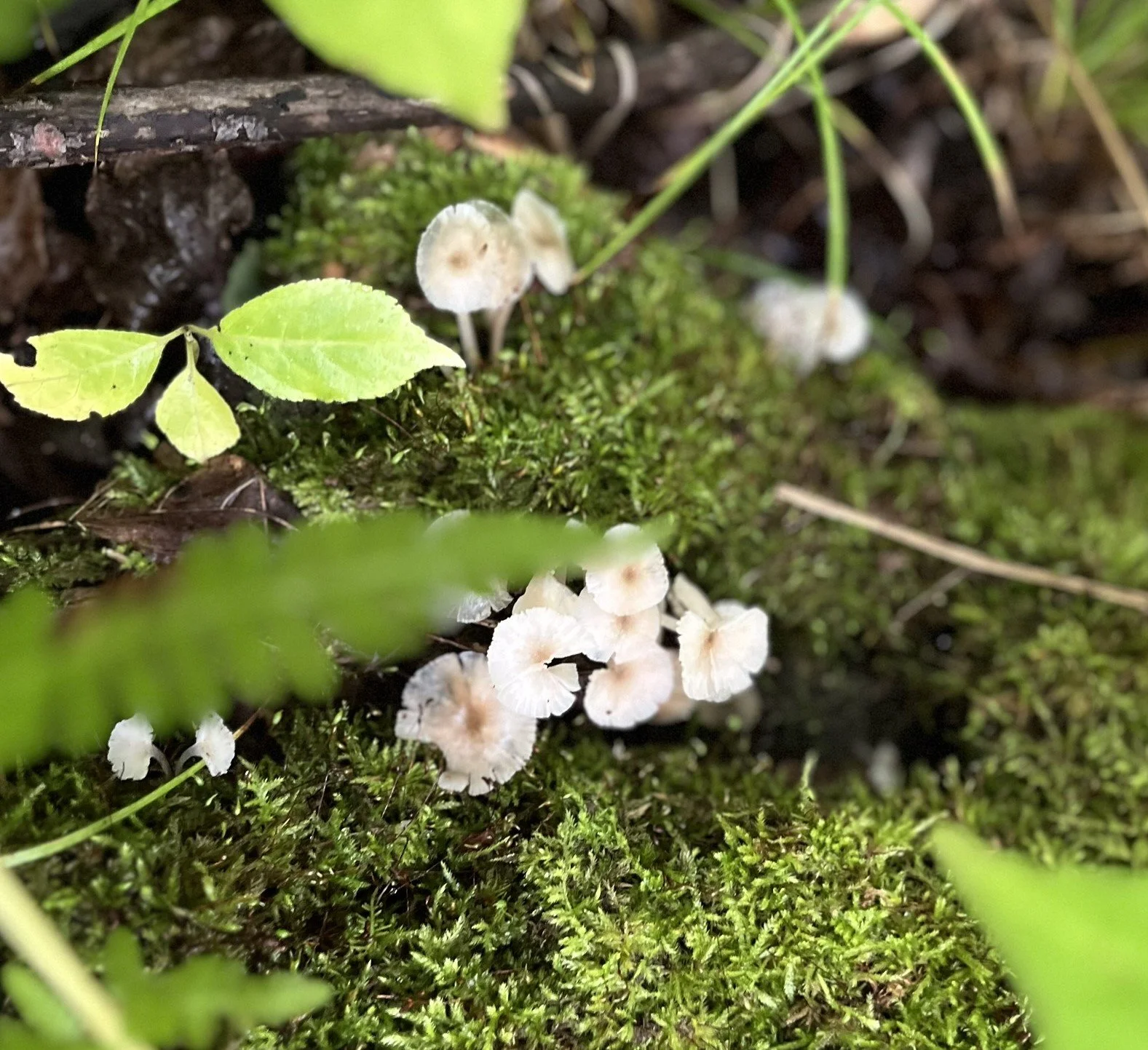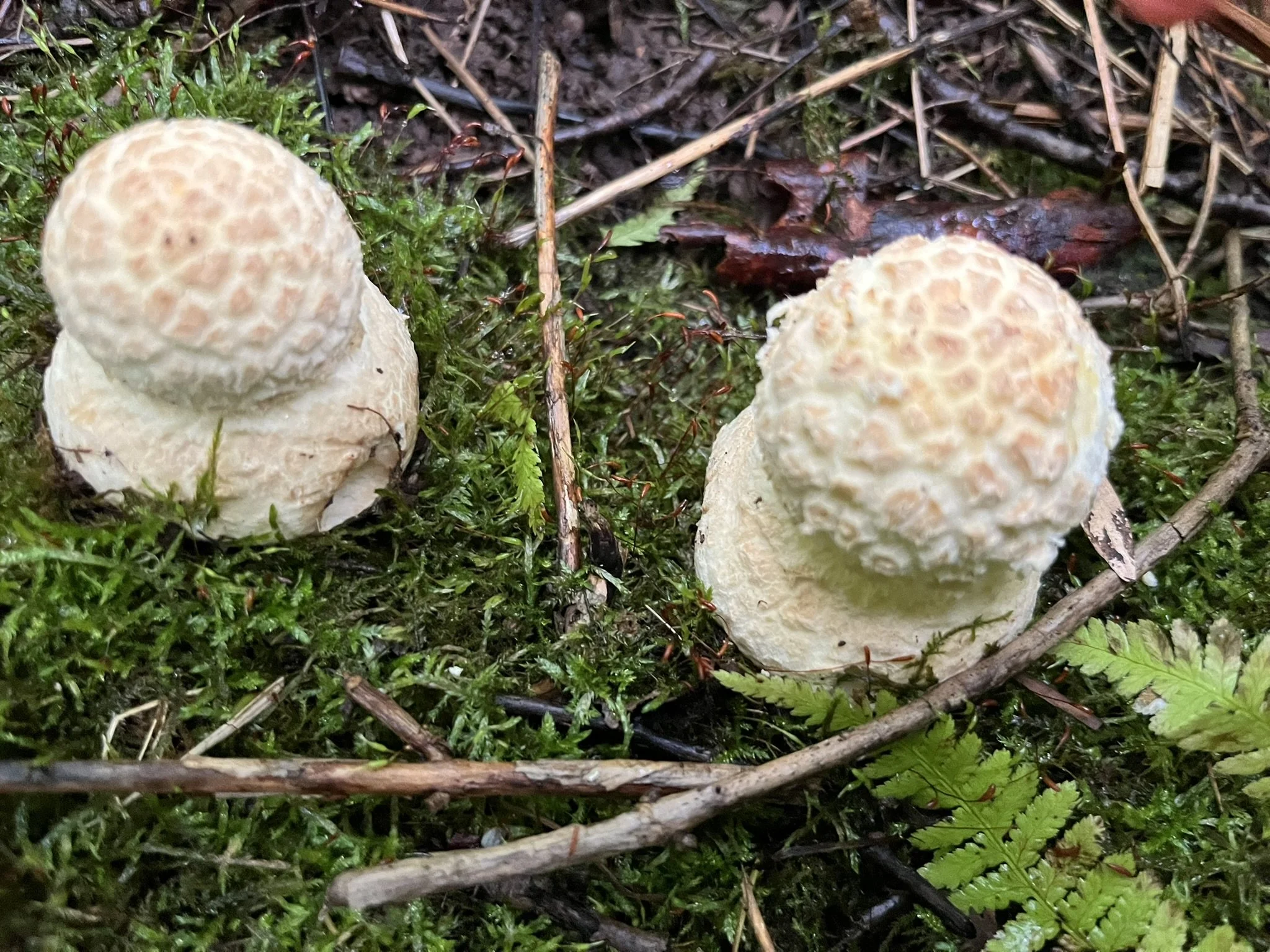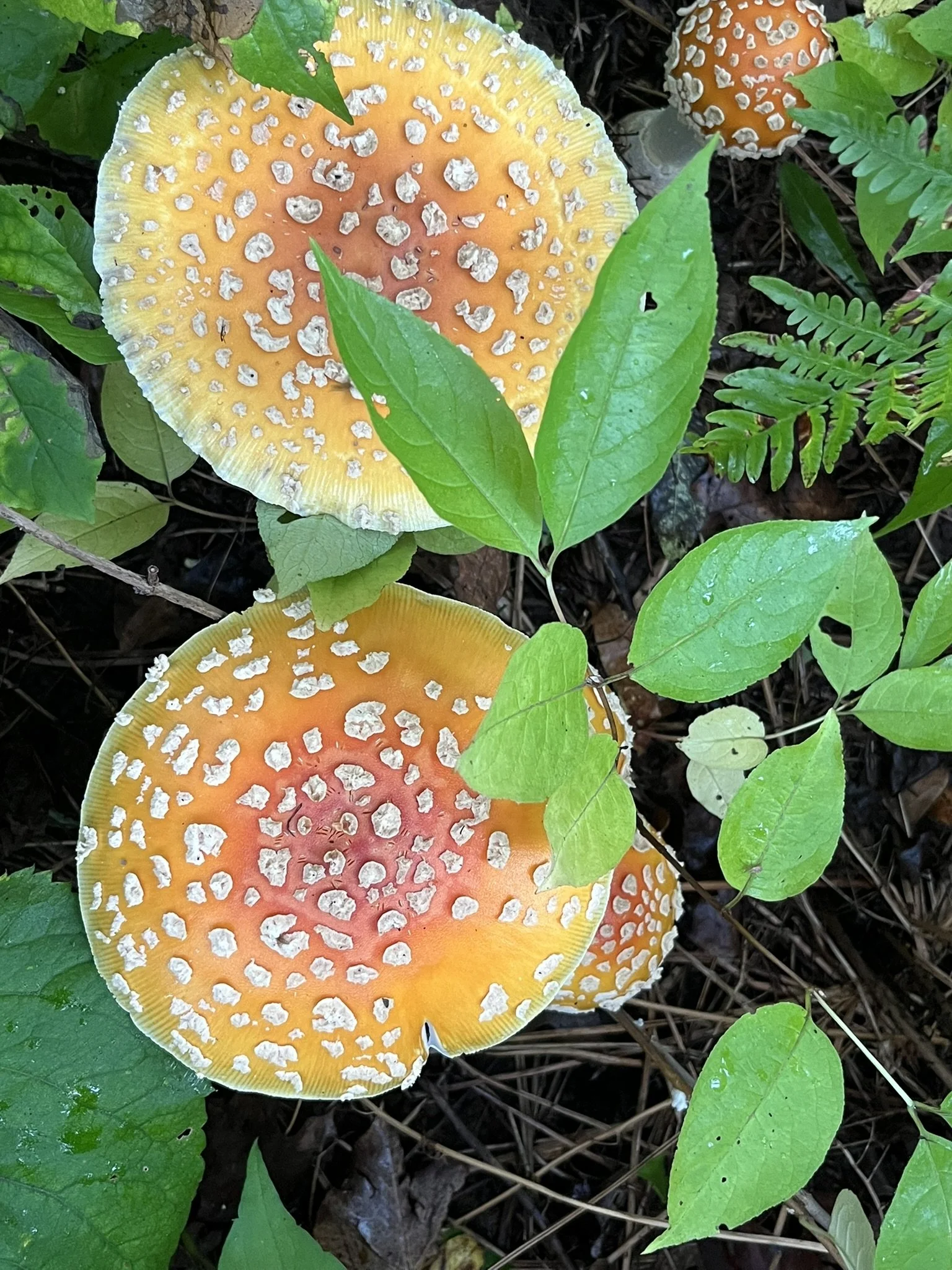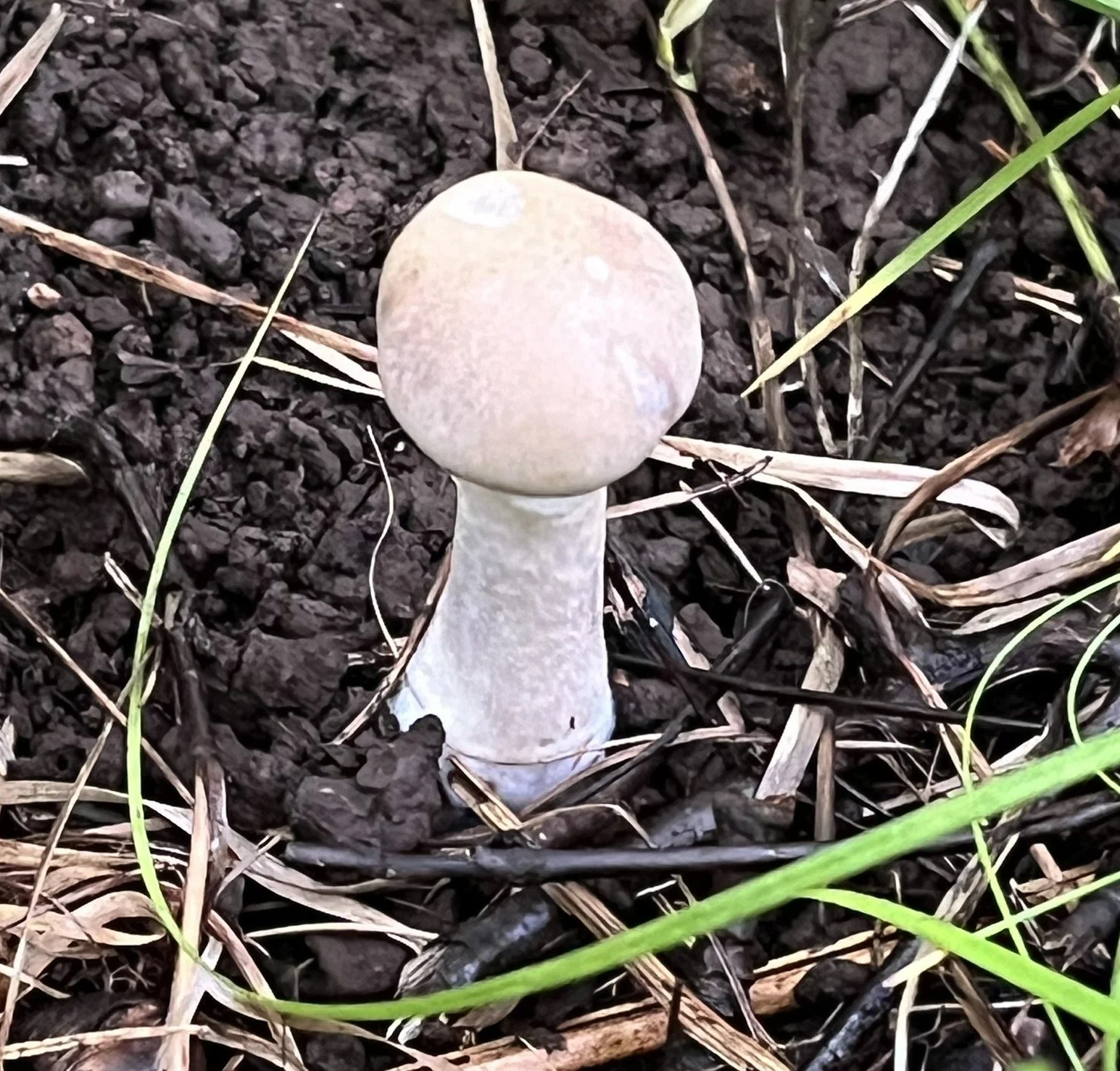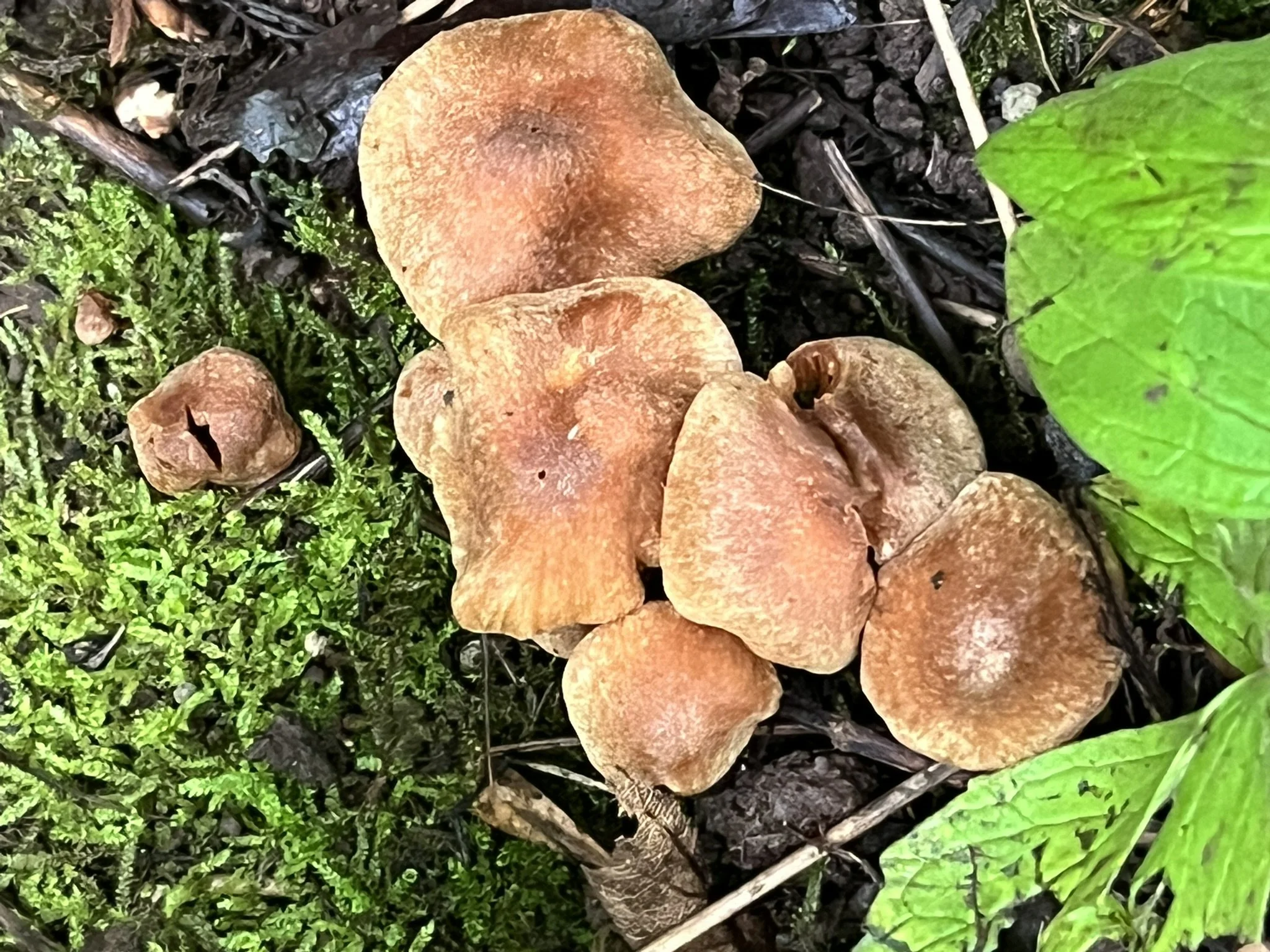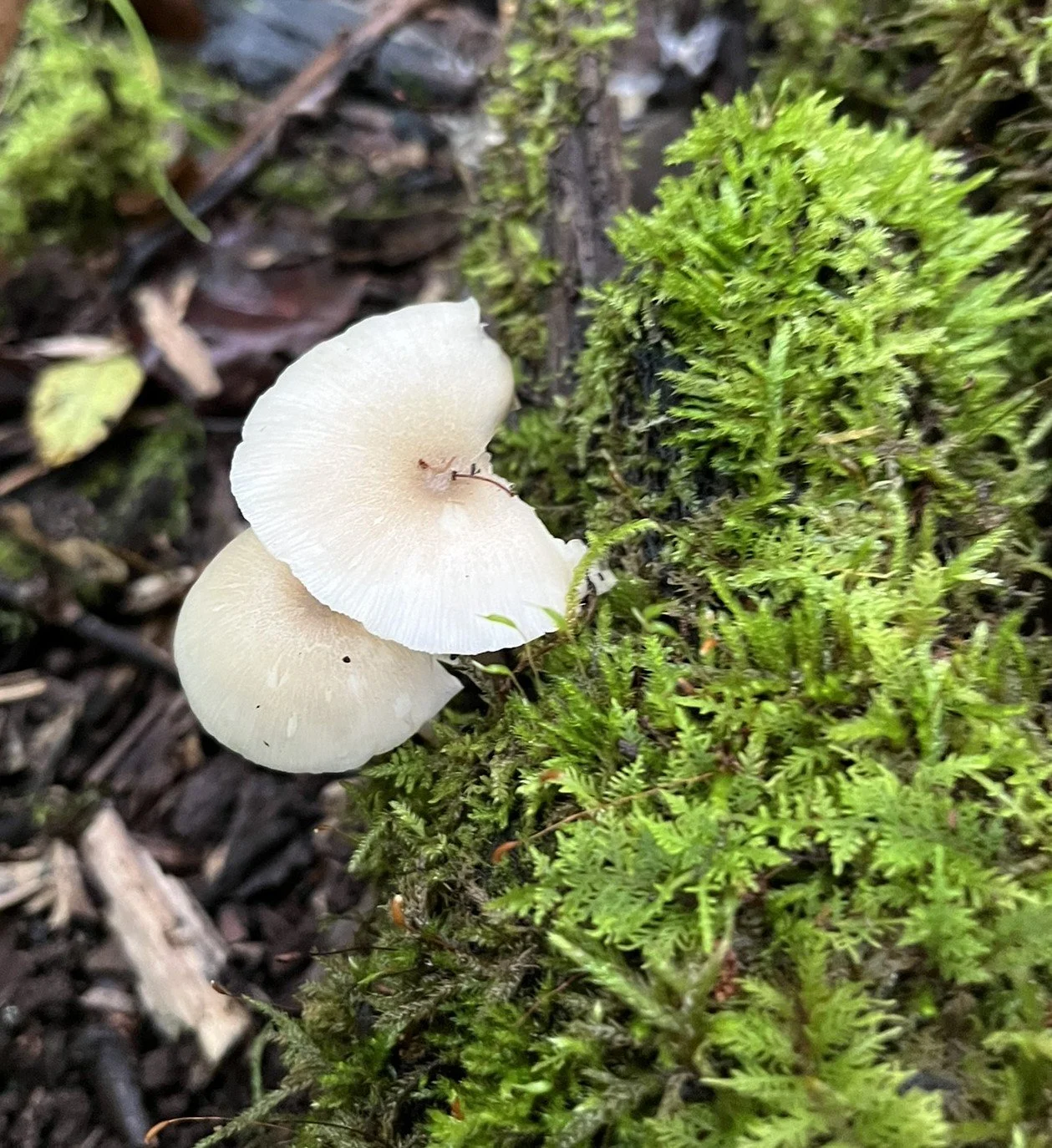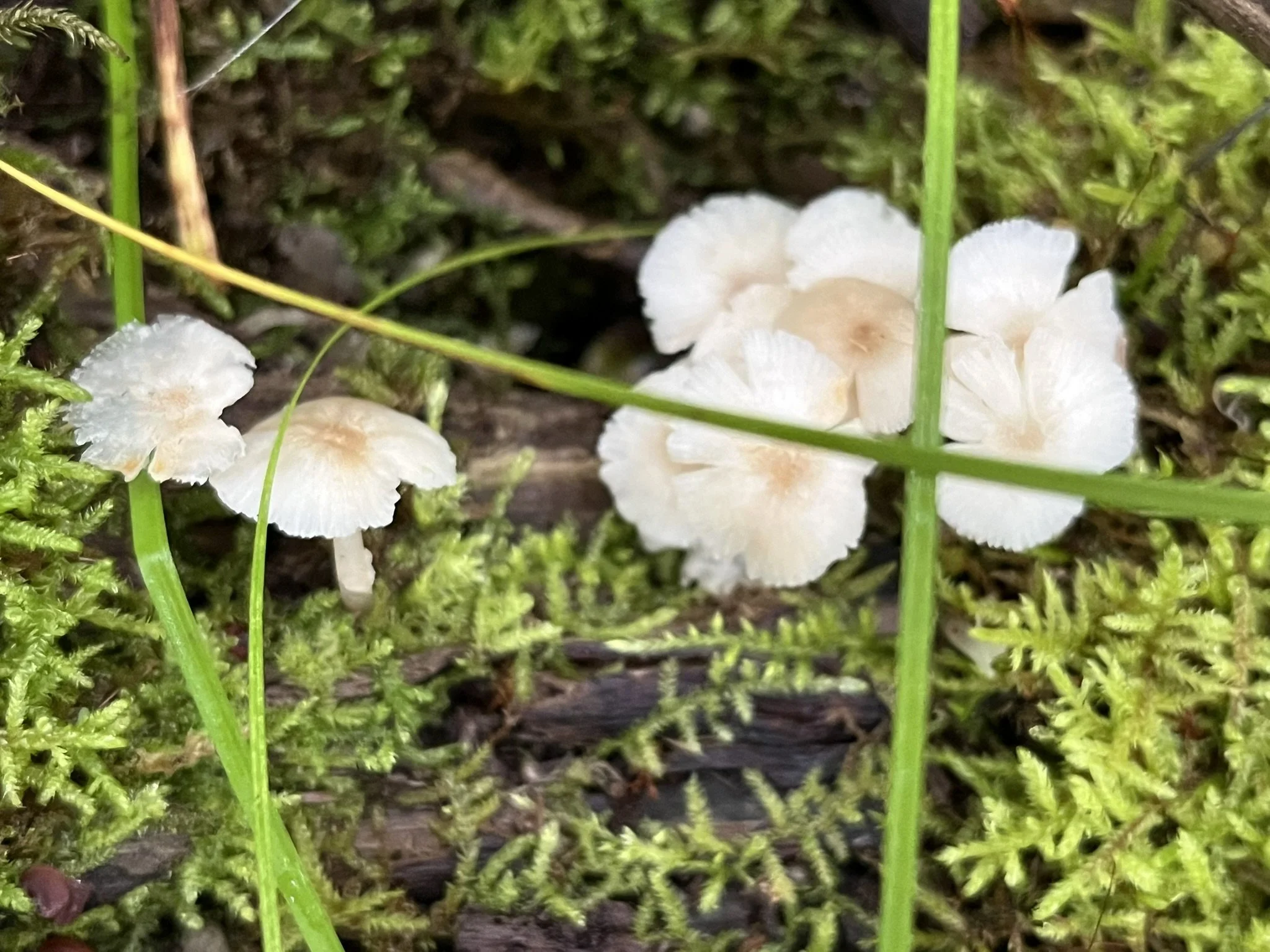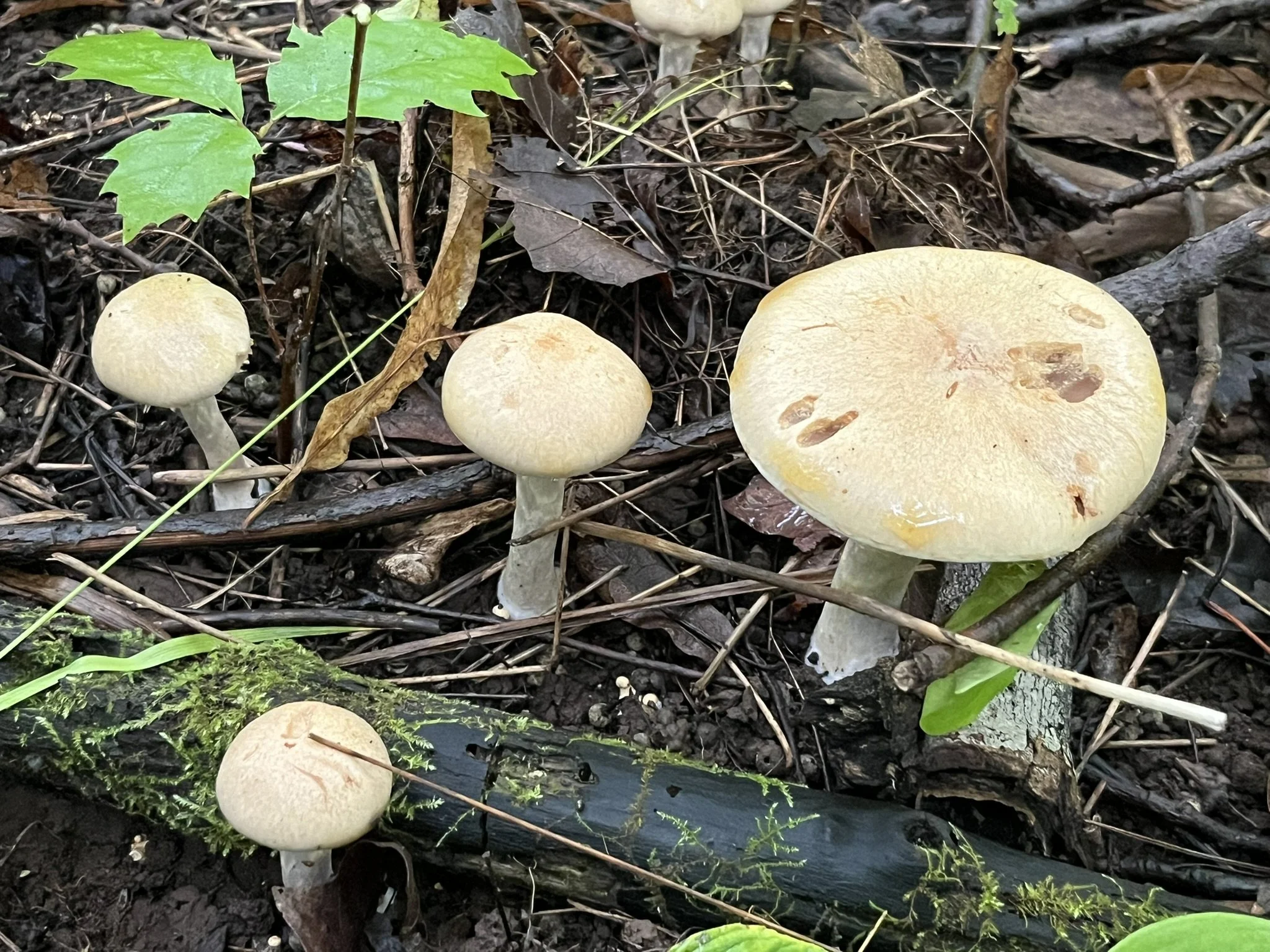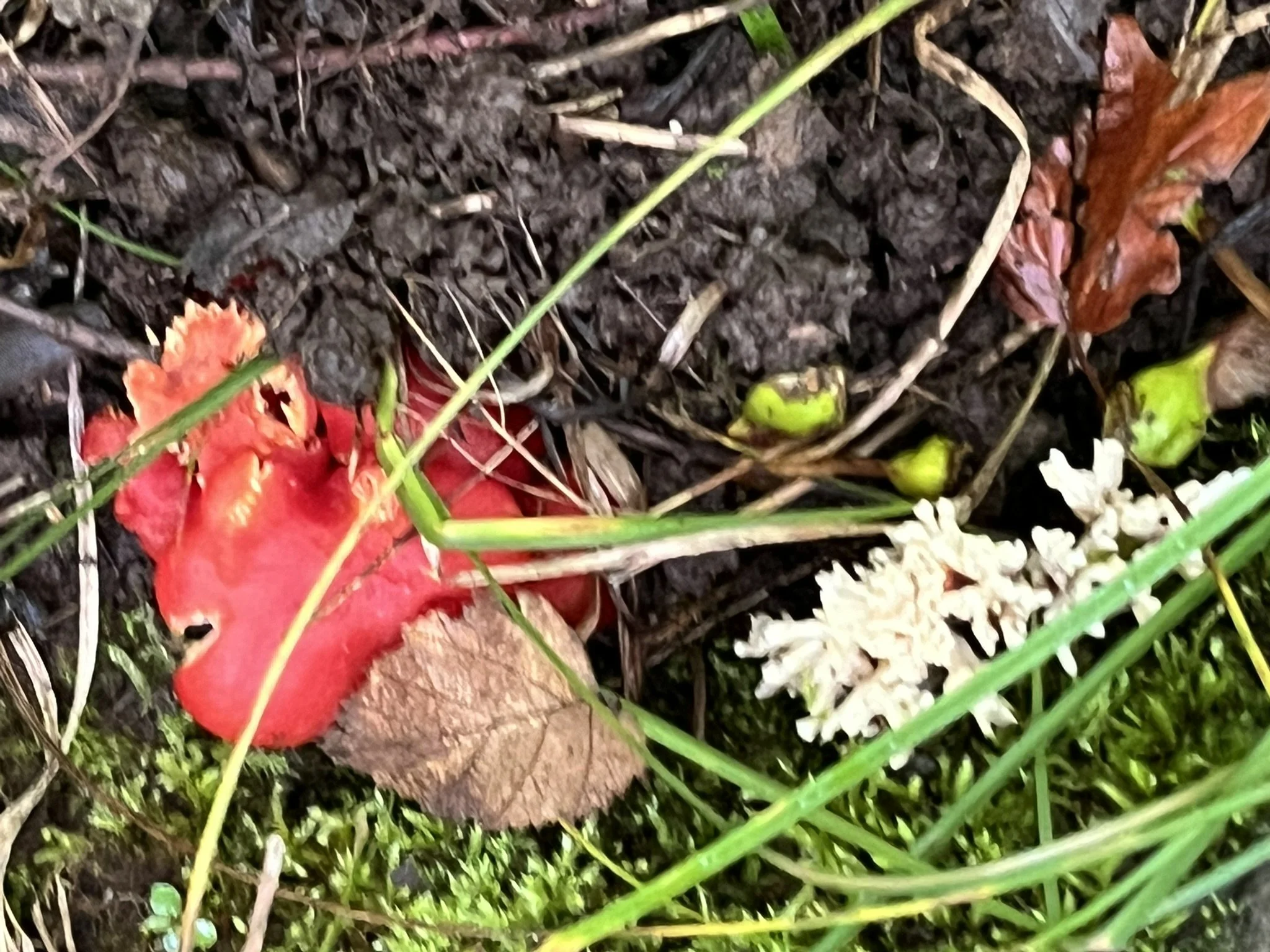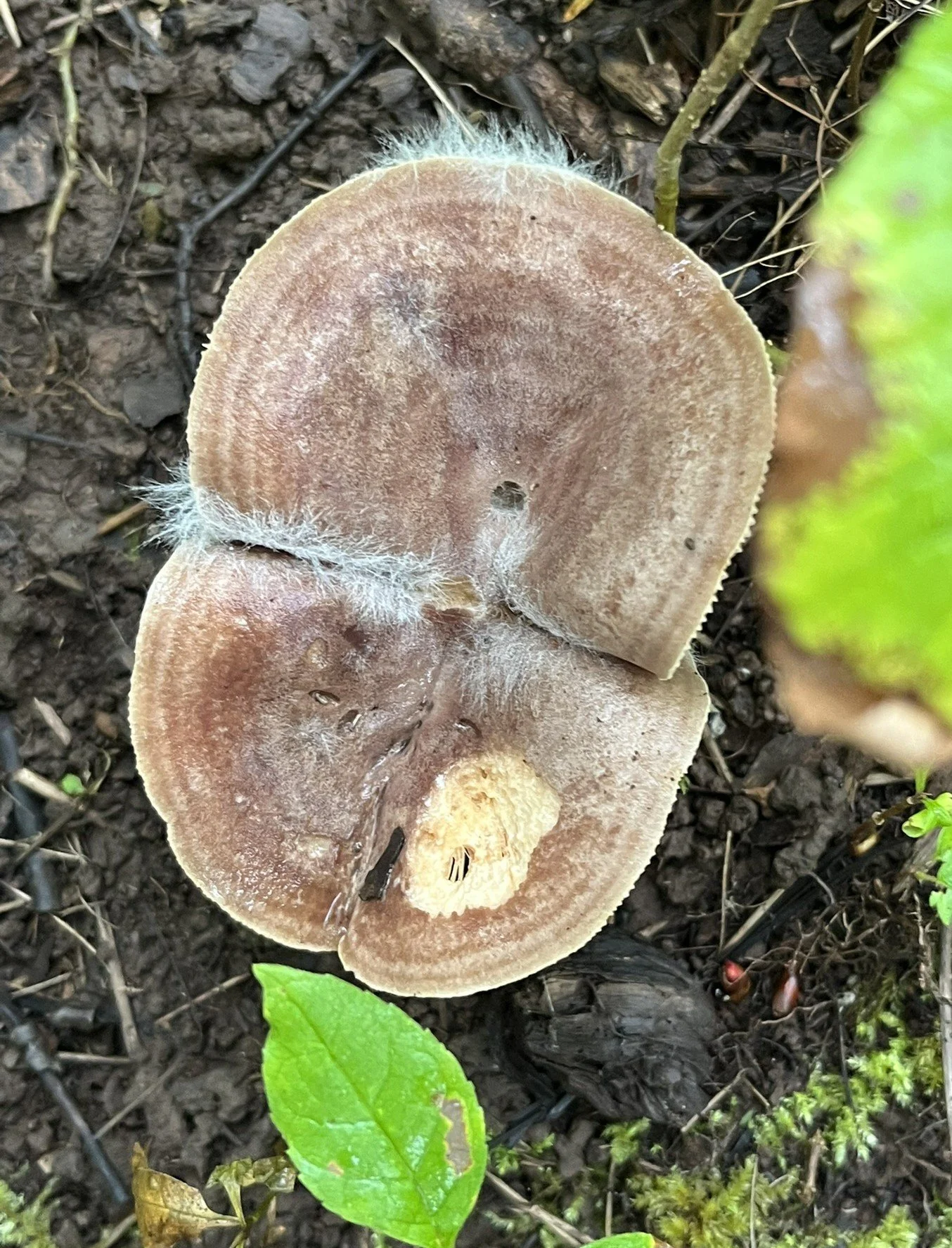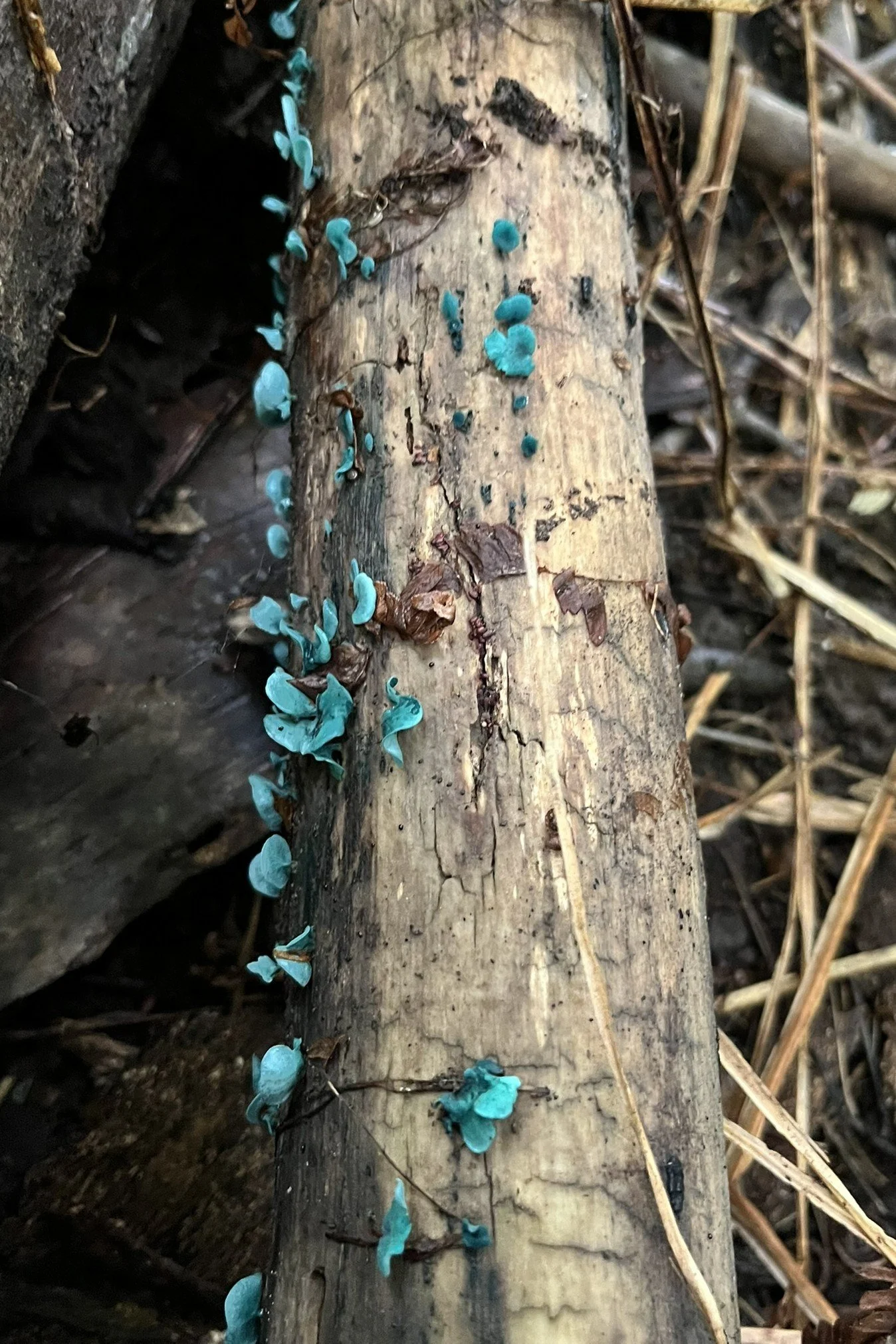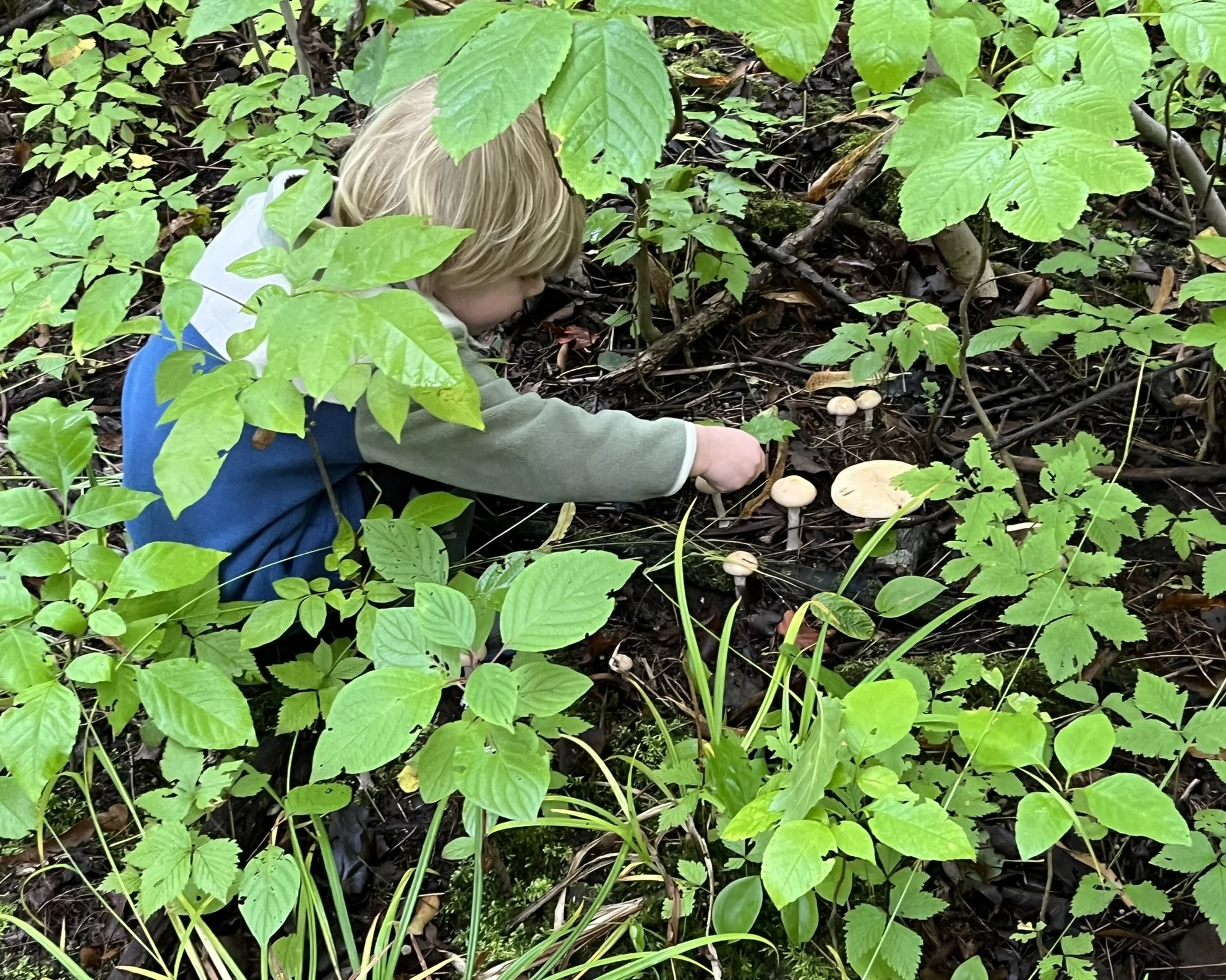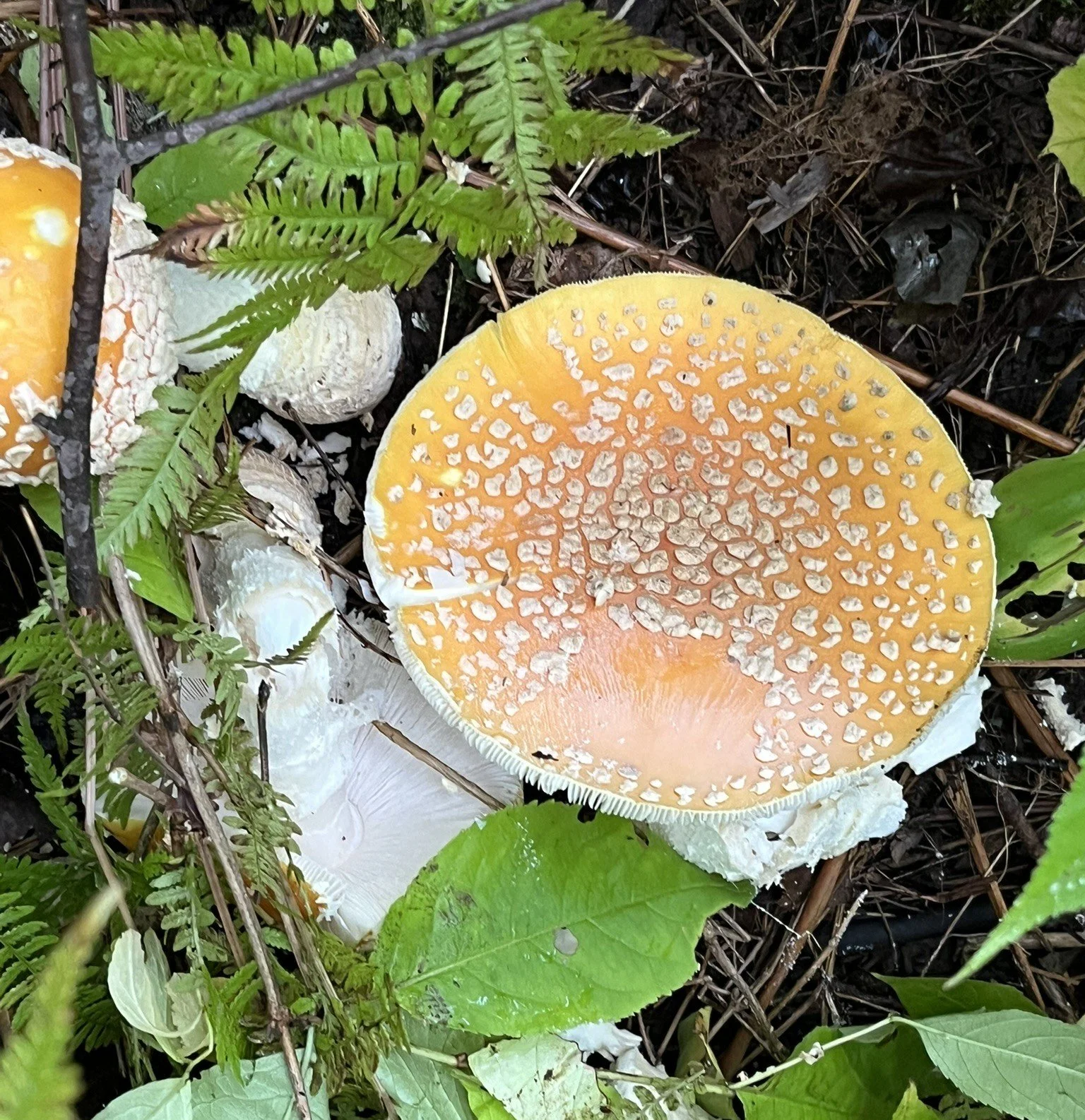It was yet another rainy, foggy day in Duluth – the perfect opportunity to share one of my favorite rainy day children’s activities with our two-year-old grandson – the mushroom treasure hunt. These wet days in early autumn set just the right conditions for the blooming of mushrooms, so we put on our rainboots and set out to find them.
“Here’s one,” I exclaimed. We went over to examine the little brown cap poking up through the ground. “And here’s another!” As Marty became accustomed to what we were looking for, he would start shouting, “Here’s one, too!” They arose in all different shapes and sizes – medium brown ones, small orange ones, huge yellow ones, tiny black ones and even tinier pink ones, coral shaped white and yellow ones, flower shaped orange ones, slimy brown ones, petaled pink ones, and the glorious surprise of never-before-seen turquoise ones. Hidden under fallen leaves, shrubby undergrowth, and pine needles, or popping up on rotting logs, we found them in clumps, or singly, in rows and in bunches. So many shapes, sizes, kinds, and colors. Such treasures!
Marty often wanted to stoop and take a closer look, touch them and feel them, and we had to warn him often not to taste them! Mushrooms and fungi are such a mix of tasty and delectable and acrid and poisonous – from hallucinogenic to fatal. So we admired them for their feast for the eyes alone.
A couple of weeks later I traveled to northern Michigan, where after several days of rain and fog the woods were festooned with bouquets of mushrooms of all colors, shapes, and sizes. So abundant were the mushrooms everywhere I looked that one could hardly call it a “hunt” – but still certainly treasures. This is morel country. In fact, the National Morel Festival is held here every year. Morels are prized for their flavor and are highly sought after for culinary delights. But morels blossom only in early spring, so they were not among the dozens of varieties of mushrooms popping up -- or in the Potawatomi word for mushroom, “puhpoweeing” up – throughout the woodland. Unlike Minnesota, where the large yellow Amanitas are by far the most abundant and showiest of the mushrooms, here I found only one, but dozens of Russolas, Lactaria, Clitocybes, Boletus, and many more that I was not able to identify filled the forest floor.
Amanita muscaria - poisonous, hallucinogenic
Russula emetica - poisonous — a powerful emetic!
Lactarius piperatus - poisonous
Clitocybe nebularis - edible, but tastes bad
Clavicorona pyxidata - edible
Ganoderma tsugae
Puffballs
Boletus — the classic toadstool — one can imagine two toads sitting atop them having a conversation.
The most delightful surprise of all was the many fairy rings, where mushrooms grow in circles. “Fairies” – from faerie -- meaning “realm of the fays” or magical people – or the “wee folk,” “fair folk,” or “people of peace.” They do lend a sense of enchantment to the woods. Coming upon them, one can imagine that one has come upon a place where the wee folk had just gathered together in a circle. I noticed that all of the fairy rings I came upon seemed to be formed from the same kind of mushroom. When I looked them up I found that indeed the Marasimius oreades grow in fairy rings formed from the mycelium extending out in a circular pattern from a central fungus. They increase in size every year as the mycelium spread out farther and farther. Apparently not only are they a delight to view, but also a delight to the palate, for not only are they edible, but considered “choice” for their excellent flavor.
To walk through the forest on the wet days of autumn is to enter the land of enchantment, with thousands of mystical creatures suddenly appearing – inviting us to follow them into the wood.
*Note — my identifications are my best guesses from looking through mushroom identification books. I am not a mycologist, so please do not use this as a guide for edible and poisonous mushrooms!
